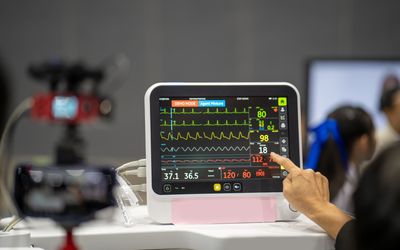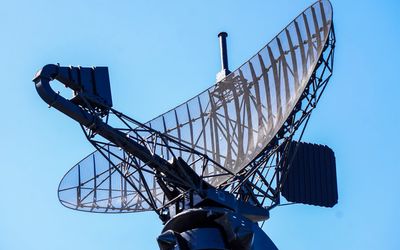Infineon XENSIV™ BGT60LTR11AIP Autonomous Radar Sensor
A fully integrated autonomous microwave motion sensor for cost-efficient, low-power applications.
Technical Specifications
| Antenna | Antenna in Package |
| Frequency range | 61 to 61.5 |
| Field of View | 90 |
| Peak Current Consumption | 110 |
| Compatible Board | DEMO BGT60LTR11AIP |
| Maximum Detection Range (Autonomous Mode) | 7 |
| Max Detection Range (SPI Mode) | 14 |
| Antenna Family | Radar 60 |
| Gain | 6 |
| Supply Voltage | 1.5 |
| Number of Antennas | 01 Receiver (Rx) and 01 Transmitter (Tx) |
| Applications | Contactless switches, automatic door openers, motion detecting alarm systems, smart lighting systems, drones, IP cameras |
Overview
The XENSIV™ 60 GHz BGT60LTR11AIP MMIC comes from the Radar 60GHz family that features a fully integrated autonomous microwave motion sensor. Thanks to the Antennas in Package configuration, it has built-in motion detection and direction of motion detection capabilities. The antenna is handy for users with little or no technical knowledge of microcontroller integration, as it can work autonomously. With compact packaging and a robust antenna design, the BGT60LTR11AIP radar sensor is helpful for various home-based and industrial applications.
Compact Size for Powerful and Wide-Range of Applications
The XENSIV™ 60 GHz BGT60LTR11AIP radar sensor has a pair of antennas that fit inside minimal dimensions of 3.3x 6.7x 0.56mm³, making the antenna design simpler and compatible with most PCB designs. The Monolithic microwave integrated circuit (MMIC) antenna packaging provides maximum detection of 90° Half Power Beam Width (HPBW).
The small size and compact antenna design make it suitable for low-power, energy-efficient, and portable applications. Hence, it can replace the conventional PIR sensors consuming less power and providing better signal accuracy.
The radar works as a Doppler motion sensor that can sense microwave motion. There is a built-in Phase-Locked loop Voltage Controlled Oscillator for frequency stabilization. As a result, it provides smooth and continuous waves for fully autonomous and SPI mode operations that can be set via hardware preset pins QS1 - 4.
To support low-power operations, the transmitter section features a medium-power amplifier. It allows the user to adjust the output power through the Serial Peripheral Interface (SPI). The integrated power detector monitors the output power. The low-phase noise push-push VCO integrated circuit ensures high-frequency generation.
The multiple operational modes make it suitable for a wide range of home-based applications like appliance switching control, power management for indoor lighting, smart home security, IP cameras, switches, contactless switching, and automatic door openers for industrial applications.
Quad State Inputs for Flexible and Configurable User Operations
The BGT60LTR11AIP radar sensor offers multiple configuration options for users. Thanks to its autonomous operations, it becomes a useful option for common users with little or no knowledge about radar systems. Additionally, it doesn’t require any complex external circuitry and works flawlessly with the BGT60LTR11AIP Demo board.
Its Quad State Inputs offer four different modes for user operations. The QS1 input activates the SPI mode, where the radar has a detection range of up to 14 meters. In this mode, users can connect an Arm® or Cortex®-M0 microcontroller to extract raw radar data from the sensor via the SPI communication module.
The QS2 input is used for configuring the radar sensitivity. It makes the radar more flexible for operations in various spaces without compromising signal quality. There are 16 sensitivity settings to help the operator set the appropriate detection range.
The QS3 input determines the signal hold time in the autonomous mode, maintaining the detection status from 0.1 seconds to 30 minutes. The QS4 input sets the radar sensor’s operating frequency between 61 to 61.5 GHz.
The built-in state machine lets the radar operate autonomously and feeds the signals to an external microcontroller for signal processing. In the autonomous mode, the radar can detect a person up to 7 meters away. This mode consumes minimal power up to 2mW, which makes it an energy-efficient radar for relatively long-range radar operations.
References
Recommended Specs
Continue Reading
Contactless Measurement of Heart Rate and Respiration Rate: Transforming Healthcare with Radar Sensors
The demand for compact yet energy-efficient radar sensors for remote vital sign monitoring is witnessing an exponential rise in the healthcare industry for several reasons.
In the realm of radar and communication systems, understanding different frequency bands is important. Among these, the K band, Ka band, and X band stand out due to their distinct properties and applications. Mastering their nuances enables engineers to improve system performance and add innovations.








